Investigation of Collapsed Building Incidents on Soft Marine Deposit: Both from Social and Technical Perspectives
Abstract
:1. Introduction
2. Methodology
2.1. Analytical Procedure
2.2. Investigation of Collapsed Incidents
3. Analysis of Collapsed Incident
3.1. Social Perspective
3.1.1. Transactions Involving Rural Land
3.1.2. Land-Policy Reform in Wenzhou
3.2. Chinese Land Use Policy
3.3. Technological Perspective
4. Suggestion for Sustainable Urban Planning
4.1. Land Policy Reform
4.2. Reasonable Monitoring Measures
5. Conclusions
- From social perspective, one of the key reasons triggering the building collapse incident was ascribed to the dual land use policy structure, which distinguishes between the city and rural areas of China. From the technological perspective, the building collapse incident site lies on the floodplain of Wenzhou City. The self-constructed residential buildings were founded on weak Wenzhou clay, and collapsed due to the combined effects of the extra vertical load resulting from unauthorized rooftop additions, differential settlement, and long-term deformation.
- The dichotomy between rural and urban areas in China appears to be reduced substantially after rural economic reform. The slow pace of land use reform progress promoted the frequency of building collapse incident. In the dual land use system, there is less or no supervision, for such construction activities in rural areas, which results in frequent rural residential building collapse incidents. Strict supervision may be required to prevent similar incident from reoccurring.
- For sustainable urban development, during the implementation of land-policy reform, the government should strengthen their management systems and ensure the effective implementation of land reform policies. The supervision capacity of government authorities to prevent unauthorized rooftop additions may need to be strengthened, reducing potential damage to occupants in similar collapse incidents. More attention should be paid to social problems associated with the personal safety issues affecting migrant workers. Mandatory regulations for any construction in China, especially for the private self-constructed work undertaken on house-building sites in rural areas should be on the “must-do” lists of government officials, thus minimizing the need for economic migration of workers.
Acknowledgments
Author Contributions
Conflicts of Interest
References
- Ding, C. Land policy reform in China: Assessment and prospects. Land Use Policy 2003, 20, 109–120. [Google Scholar] [CrossRef]
- Huang, Z.H. Strategic interaction in local governments’ industrial land supply: Evidence from China. Urban Stud. 2017, 54, 1328–1346. [Google Scholar] [CrossRef]
- Li, L.H.; Walker, A. Benchmark pricing behaviour of land in China’s reforms. J. Prop. Res. 1996, 13, 183–196. [Google Scholar] [CrossRef]
- Liu, W.X.; Yang, D.S. China’s land use policy under change. Land Use Policy 1990, 7, 198–201. [Google Scholar]
- CPGPRC. The Central People’s Government of the People’s Republic of China. The Land Administration Law of the People’s Republic of China. 2016. Available online: http://www.gov.cn/banshi/html (accessed on 31 October 2016). (In Chinese)
- Qiu, B.X. Challenges and strategies for China’s urbanisation. Urban Stud. 2010, 17, 1–7. (In Chinese) [Google Scholar]
- Tan, Y.; Huang, R.; Kang, Z.; Bin, W. Covered semi-top-down excavation of subway station surrounded by closely spaced buildings in downtown Shanghai: Building response. J. Perform. Constr. Facil. ASCE 2016. [Google Scholar] [CrossRef]
- Lyu, H.M.; Sun, W.J.; Shen, S.L.; Arulrajah, A. Flood risk assessment in metro systems of mega-cities using a GIS-based modeling approach. Sci. Total Environ. 2018. [Google Scholar] [CrossRef]
- Wu, H.N.; Shen, S.L.; Ma, L.; Yin, Z.Y.; Horpibulsuk, S. Evaluation of the strength increase of marine clay under staged embankment loading: A case study. Mar. Georesour. Geotechnol. 2015, 33, 532–541. [Google Scholar] [CrossRef]
- Liu, R.; Wong, T.C. Urban village redevelopment in Beijing: The state-dominated formalization of informal housing. Cities 2018, 72, 160–172. [Google Scholar] [CrossRef]
- Zheng, B.; Wu, X. Household Registration, Urban Status Attainment, and Social Stratification in Urban China. Res. Soc. Stratif. Mobil. 2018, 53, 40–49. [Google Scholar]
- The Number of Migrant Workers in China Reached 269 Million in 2013. Available online: https://wenku.baidu.com/view/73aebf0f54270722192e453610661ed9ad515592.html (accessed on 30 January 2018). (In Chinese).
- Lyu, H.M.; Shen, J.S.; Arulrajah, A. Assessment of geohazards and preventative countermeasures using AHP incorporated with GIS in Lanzhou, China. Sustainability 2018, 10, 304. [Google Scholar] [CrossRef]
- Xu, Y.S.; Shen, S.L.; Ren, D.J.; Wu, H.N. Analysis of factors in land subsidence in Shanghai: A view based on a strategic environmental assessment. Sustainability 2016, 8, 573. [Google Scholar] [CrossRef]
- Shen, S.L.; Xu, Y.S. Numerical evaluation of land subsidence induced by groundwater pumping in Shanghai. Can. Geotech. J. 2011, 48, 1378–1392. [Google Scholar] [CrossRef]
- Shen, S.L.; Ma, L.; Xu, Y.S.; Yin, Z.Y. Interpretation of increased deformation rate in aquifer IV due to groundwater pumping in Shanghai. Can. Geotech. J. 2013, 50, 1129–1142. [Google Scholar] [CrossRef]
- Lyu, H.M.; Wang, G.F.; Cheng, W.C.; Shen, S.L. Tornado hazards on June 23rd in Jiangsu Province, China: Preliminary investigation and analysis. Nat. Hazards 2017, 85, 597–604. [Google Scholar] [CrossRef]
- Lyu, H.M.; Wang, G.F.; Shen, J.S.; Lu, L.H.; Wang, G.Q. Analysis and GIS mapping of flooding hazards on 10 May 2016, Guangzhou, China. Water 2016, 8, 447. [Google Scholar] [CrossRef]
- WMPG. The Wenzhou Municipal People’s Government. 2016. Available online: http://www.iqiyi.com/w_19rvhfpg91.html (accessed on 30 January 2018).
- CBCIWC. Cause of Building Collapse Incident in Wenzhou City: Self-Constructed and No Strong Enough Foundation. 2016. Available online: http://money.163.com/16/1011/12/C33IS8AA002580S6.html (accessed on 11 October 2016).
- Wang, W.D.; Li, Q.; Hu, Y.; Shi, J.W.; Ng, C.W.W. Field investigation of collapse of a 13-Story high-rise residential building in Shanghai. J. Perform. Constr. Facil. 2017, 31, 04017012. [Google Scholar] [CrossRef]
- Chai, J.C.; Shen, S.L.; Ding, W.Q.; Zhu, H.H.; Cater, J.P. Numerical investigation of the failure of a building in Shanghai, China. Comput. Geotech. 2014, 55, 482–493. [Google Scholar] [CrossRef]
- Summary of Building Collapse from 2009 to 2016. Available online: https://wenku.baidu.com/view/0233aee91ed9ad5l (accessed on 23 December 2017).
- Ding, C.R. The benchmark land price system and urban land use efficiency in China. Chin. Geogr. Sci. 2001, 11, 306–314. [Google Scholar] [CrossRef]
- Aspinall, R.; Staiano, M. A conceptual model for land system dynamics as a coupled human–environment system. Land 2017, 6, 81. [Google Scholar] [CrossRef]
- Zhu, X. Impact of the household registration system on farmers’ rural housing land use decisions in China. Land 2017, 6, 75. [Google Scholar] [CrossRef]
- Wu, F. Urban restructuring in China’s emerging market economy: Towards a framework for analysis. Int. J. Urban Reg. Res. 1997, 21, 640–663. [Google Scholar] [CrossRef]
- Lai, L.W.C. Land use rights reform and the real estate market in China: A synoptic account of theoretical issues and the property rights system. Prop. Manag. 1995, 13, 21–28. [Google Scholar]
- Tang, Y. Urban land use in China: Policy issues and options. Land Use Policy 1989, 6, 53–63. [Google Scholar] [CrossRef]
- Wong, K.K.; Zhao, X.B. The influence of bureaucratic behavior on land apportionment in China: The informal process. Environ. Plan. C 1999, 17, 113–125. [Google Scholar] [CrossRef]
- Zhu, J. Changing land policy and its impact on local growth: The experience of the Shenzhen Special Economic Zone, China, in the 1980s. Urban Stud. 1994, 31, 1611–1623. [Google Scholar] [CrossRef]
- Wu, G.; Miao, Z.; Shao, S.; Jiang, K.; Geng, Y.; Li, D.; Liu, H. Evaluating the construction efficiencies of urban wastewater transportation and treatment capacity: Evidence from 70 megacities in China. Resour. Conserv. Recycl. 2016. [Google Scholar] [CrossRef]
- Jin, S.; Bluemling, B.; Mol, A.P. Mitigating land pollution through pesticide packages—The case of a collection scheme in Rural China. Sci. Total Environ. 2018, 622, 502–509. [Google Scholar] [CrossRef] [PubMed]
- Walker, A.; HIN, L. Land use rights reform and the real estate market in China. J. Real Estate Lit. 1994, 2, 199–211. [Google Scholar]
- Dowall, D.E. Establishing urban land markets in the People’s Republic of China. J. Am. Plan. Assoc. 1993, 59, 182–192. [Google Scholar] [CrossRef]
- OHMMGLD. Office of Housing Management of Municipal Government in Lucheng District. Decision on Collection of Collective-Owned Rural Land Parcel in Lucheng District. Wenzhou City No 18. 2013. Available online: http://www.lczsb.com/Art/Art_15/Art_15_412.aspx (accessed on 16 November 2016). (In Chinese).
- Victims of Wenchuan Earthquake. Available online: https://news.qq.com/a/20080514/004691.htm (accessed on 30 January 2018).
- Yang, Y.; Gallagher, M. Moving in and moving up? Labor conditions and China’s changing development model. Public Adm. Dev. 2017, 37, 160–175. [Google Scholar] [CrossRef]
- Mohabir, N.; Jiang, Y.; Ma, R. Chinese floating migrants: Rural-urban migrant labourers’ intentions to stay or return. Habitat Int. 2017, 60, 101–110. [Google Scholar] [CrossRef]
- Sit, V.F. A window on Beijing: The social geography of housing in a period of transition, 1985–1990. Third World Plan. Rev. 2000, 22, 237. [Google Scholar] [CrossRef]
- Liu, J.; Nijkamp, P.; Lin, D. Urban-rural imbalance and Tourism-Led Growth in China. Ann. Tour. Res. 2017, 64, 24–36. [Google Scholar] [CrossRef]
- Zeuthen, J. Rule through difference on China’s urban—Rural boundary. Third World Q. 2012, 33, 689–704. [Google Scholar] [CrossRef]
- GPRC. Regulations on the Supervision of Village and Town Planning and Construction. The Government People’s Republic of China. No 116. 1993. Available online: http://www.docin.com/p-15345829.html (accessed on 23 April 2017). (In Chinese).
- GPRC. Regulations on Quality Management of Construction Projects. The Government People’s Republic of China. No 279. 2000. Available online: http://www.doc88.com/p-608587359891.html (accessed on 23 April 2017). (In Chinese).
- GPRC. Notice on the Organization to Carry out the National Construction Quality Supervision and Inspection. The Government of the People’s Republic of China. No 2009340. 2009. Available online: http://www.chinabuilding.com.cn/article-347.html (accessed on 23 April 2017). (In Chinese).
- Li, K.Z. Responsibility for compensation for personal injury of employees in rural unqualified buildings. Mark. Mod. 2012, 689, 317–318. (In Chinese) [Google Scholar]
- Zhang, S. Hidden dangers of rural construction cannot be ignored. Jinhua Daily 2014, 12, 1–2. (In Chinese) [Google Scholar]
- Ren, Y. The investigation report on the compensation for personal injury in rural housing construction: Taking Wulong County of Chongqing city as a sample. Master Thesis, Southwest University of Political Science and Law, Chengdu City, China, 2013. (In Chinese). [Google Scholar]
- Liu, X.; Xue, C.Q. Exploring the challenges to housing design quality in China: An empirical study. Habitat Int. 2016, 57, 242–249. [Google Scholar] [CrossRef]
- Code for Design of Building Foundation, GB5007-2011. 2012. Available online: https://wenku.baidu.com/view/d462a8a2284ac850ad0242ad.html (accessed on 30 January 2018).
- Yamin, L.E.; Hurtado, A.; Rincon, R.; Dorado, J.F.; Reyes, J.C. Probabilistic seismic vulnerability assessment of buildings in terms of economic losses. Eng. Str. 2017, 138, 308–323. [Google Scholar] [CrossRef]
- Du, Y.J.; Wei, M.L.; Reddy, K.R.; Liu, Z.P.; Jin, F. Effect of acid rain pH on leaching behavior of cement stabilized lead-contaminated soil. J. Hazard. Mater. 2014, 271, 131–140. [Google Scholar] [CrossRef] [PubMed]
- Zhu, Q.Y.; Jin, Y.F.; Yin, Z.Y.; Hicher, P.Y. Influence of natural deposition plane orientation on oedometric consolidation behavior of three typical clays from southeast coast of China. J. Zhejiang Univ. Sci. 2013, 14, 767–777. [Google Scholar] [CrossRef]
- Zhu, Q.Y.; Yin, Z.Y.; Hicher, P.Y.; Shen, S.L. Nonlinearity of one-dimensional creep characteristics of soft clays. Acta Geotech. 2016, 11, 887–900. [Google Scholar] [CrossRef]
- Yin, Z.Y.; Karstunen, M.; Chang, C.S.; Koskinen, M.; Lojander, M. Modeling time-dependent behavior of soft sensitive clay. ASCE J. Geotech. Geoenviron. Eng. 2011, 137, 1103–1113. [Google Scholar] [CrossRef]
- Yin, Z.Y.; Jin, Y.F.; Shen, S.L.; Hicher, P.Y. Optimization techniques for identifying soil parameters in geotechnical engineering: Comparative study and enhancement. Int. J. Numer. Anal. Methods Geomech. 2018, 42, 70–94. [Google Scholar] [CrossRef]
- Jin, Y.F.; Yin, Z.Y.; Shen, S.L.; Hicher, P.Y. Selection of sand models and identification of parameters using an enhanced genetic algorithm. Int. J. Numer. Anal. Methods Geomech. 2015, 40, 1219–1240. [Google Scholar] [CrossRef]
- Jin, Y.F.; Yin, Z.Y.; Shen, S.L.; Zhang, D.M. A new hybrid real-coded genetic algorithm and its application to parameters identification of soils. Inverse Probl. Sci. Eng. 2016, 25, 1343–1366. [Google Scholar] [CrossRef]
- Tian, L.; Guo, X.; Yin, W. From urban sprawl to land consolidation in suburban Shanghai under the backdrop of increasing versus decreasing balance policy: A perspective of property rights transfer. Urban Stud. 2017, 54, 878–896. [Google Scholar] [CrossRef]
- Xu, W.; Yang, W.; Zhang, C.; Yu, D. Shake table test for the collapse investigation of a typical multi-story reinforced concrete frame structure in the meizoseismal area. Appl. Sci. 2017, 7, 593. [Google Scholar] [CrossRef]
- Shen, S.L.; Wang, J.P.; Wu, H.N.; Xu, Y.S.; Ye, G.L.; Yin, Z.Y. Evaluation of hydraulic conductivity for both marine and deltaic deposit based on piezocone test. Ocean Eng. 2015, 110, 174–182. [Google Scholar] [CrossRef]
- Shen, S.L.; Wang, Z.F.; Cheng, W.C. Estimation of lateral displacement induced by jet grouting in clayey soils. Geotech. ICE 2017, 67, 621–630. [Google Scholar] [CrossRef]
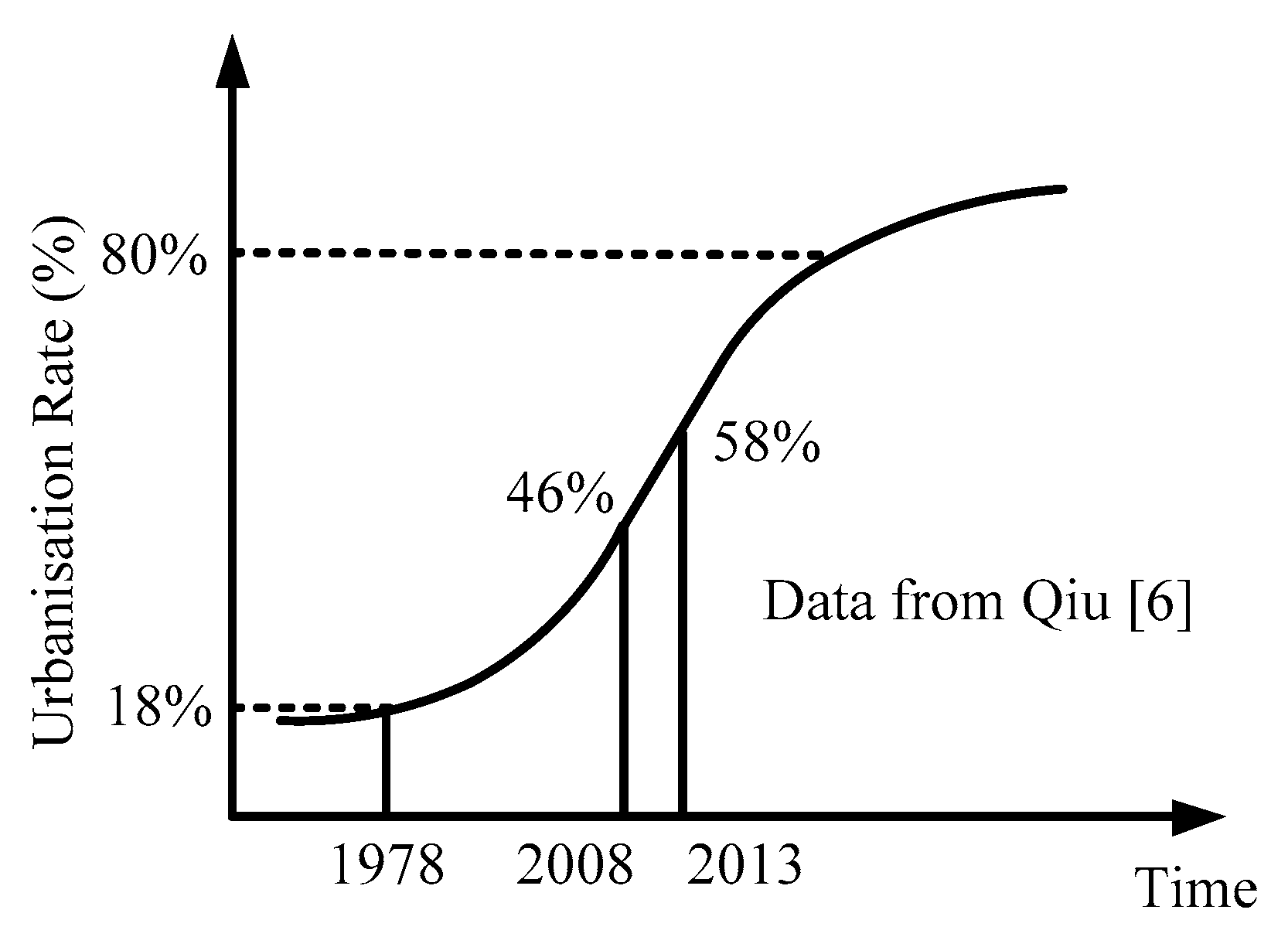

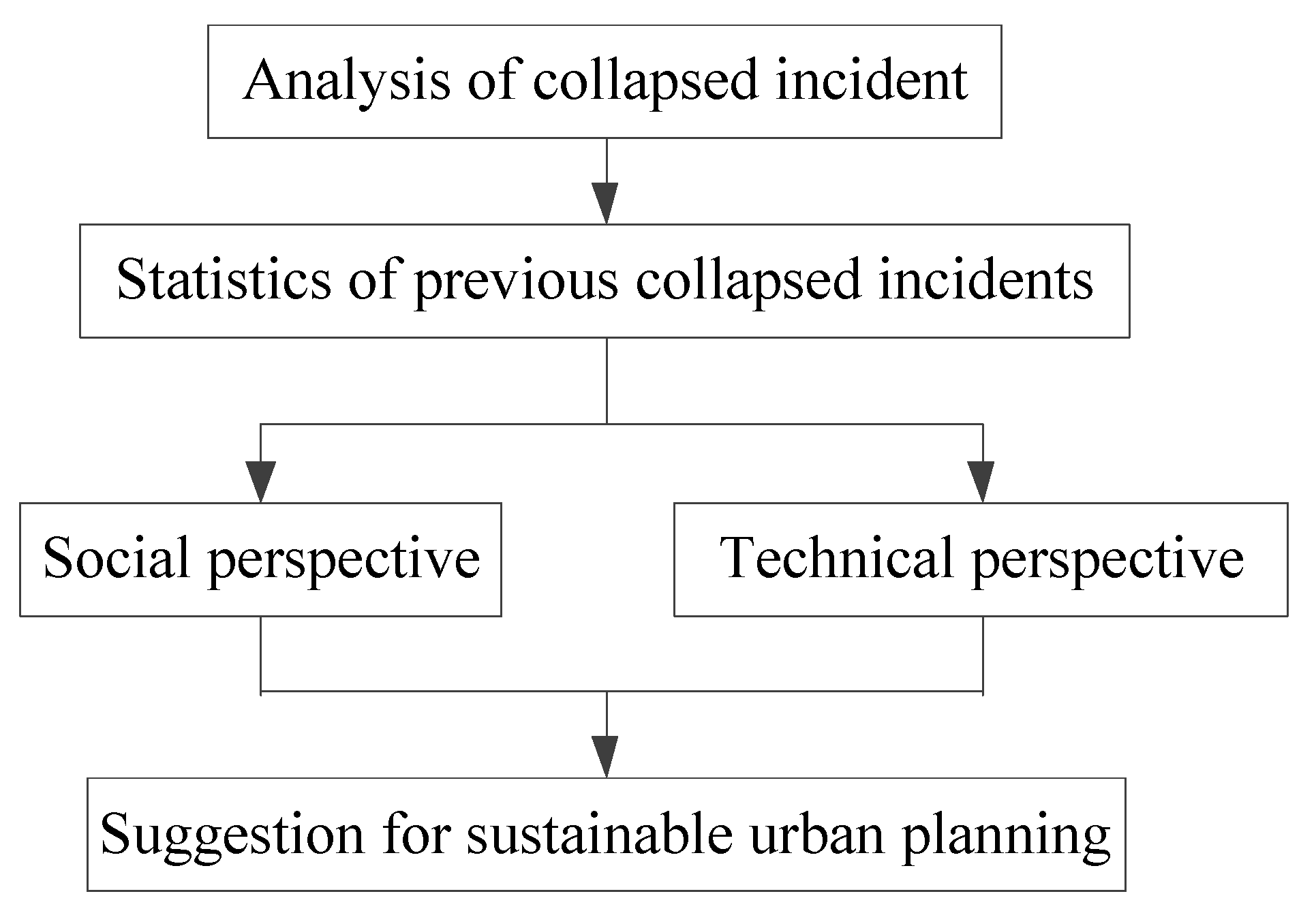
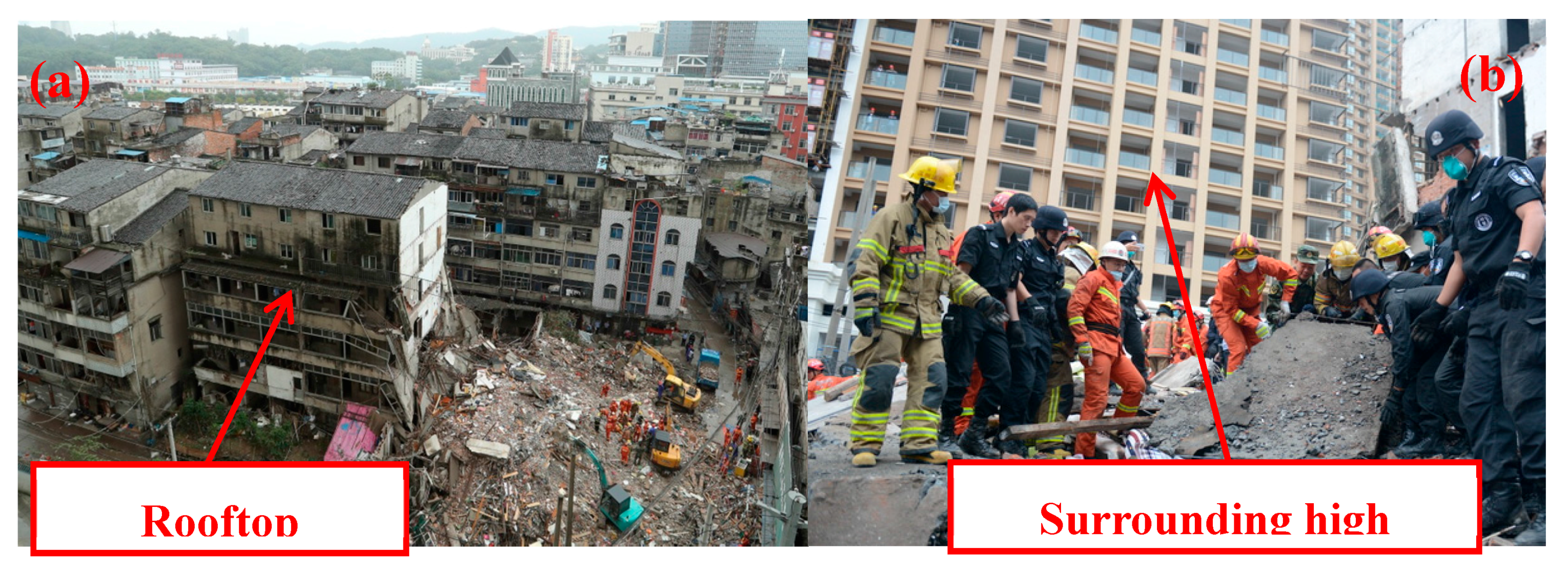
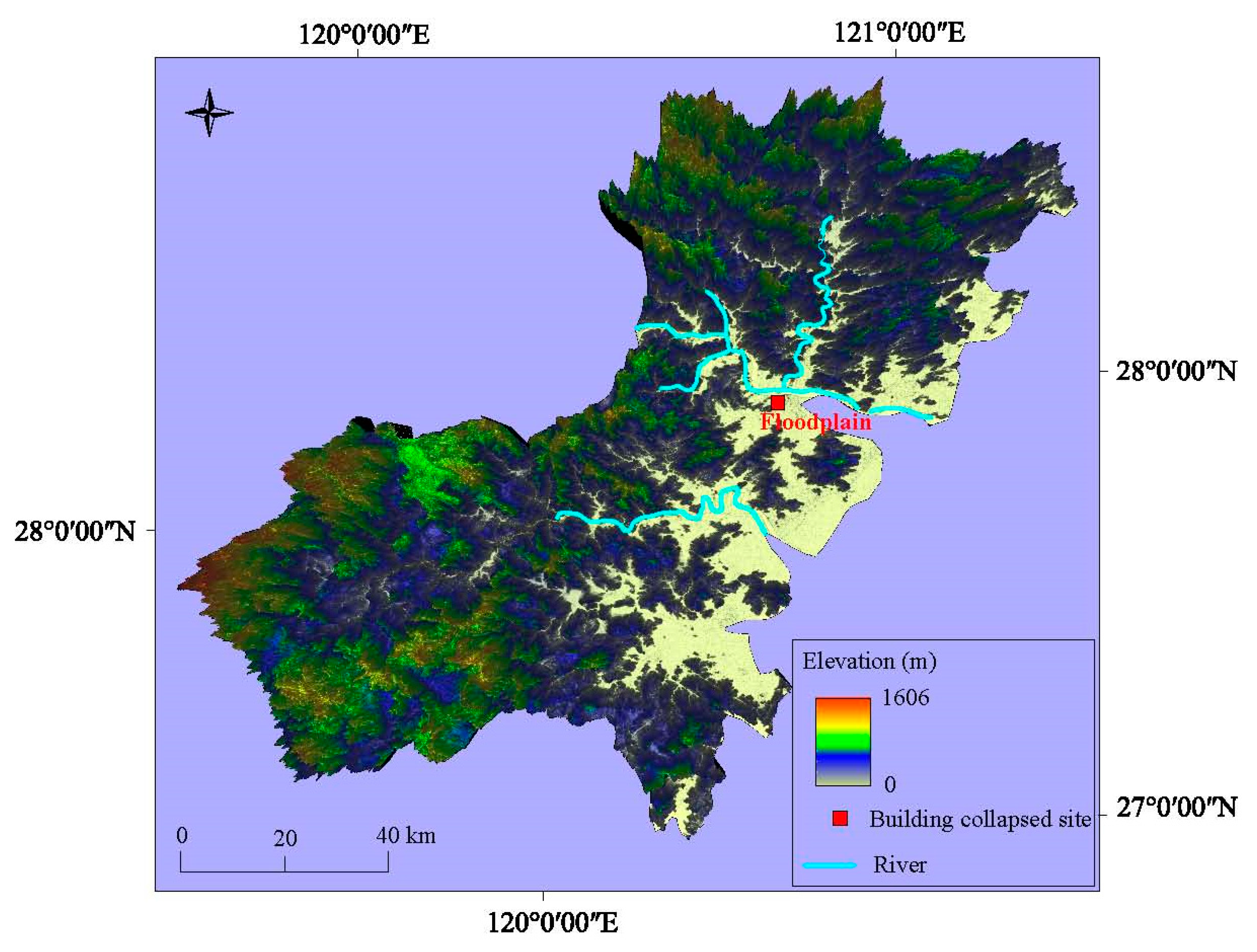
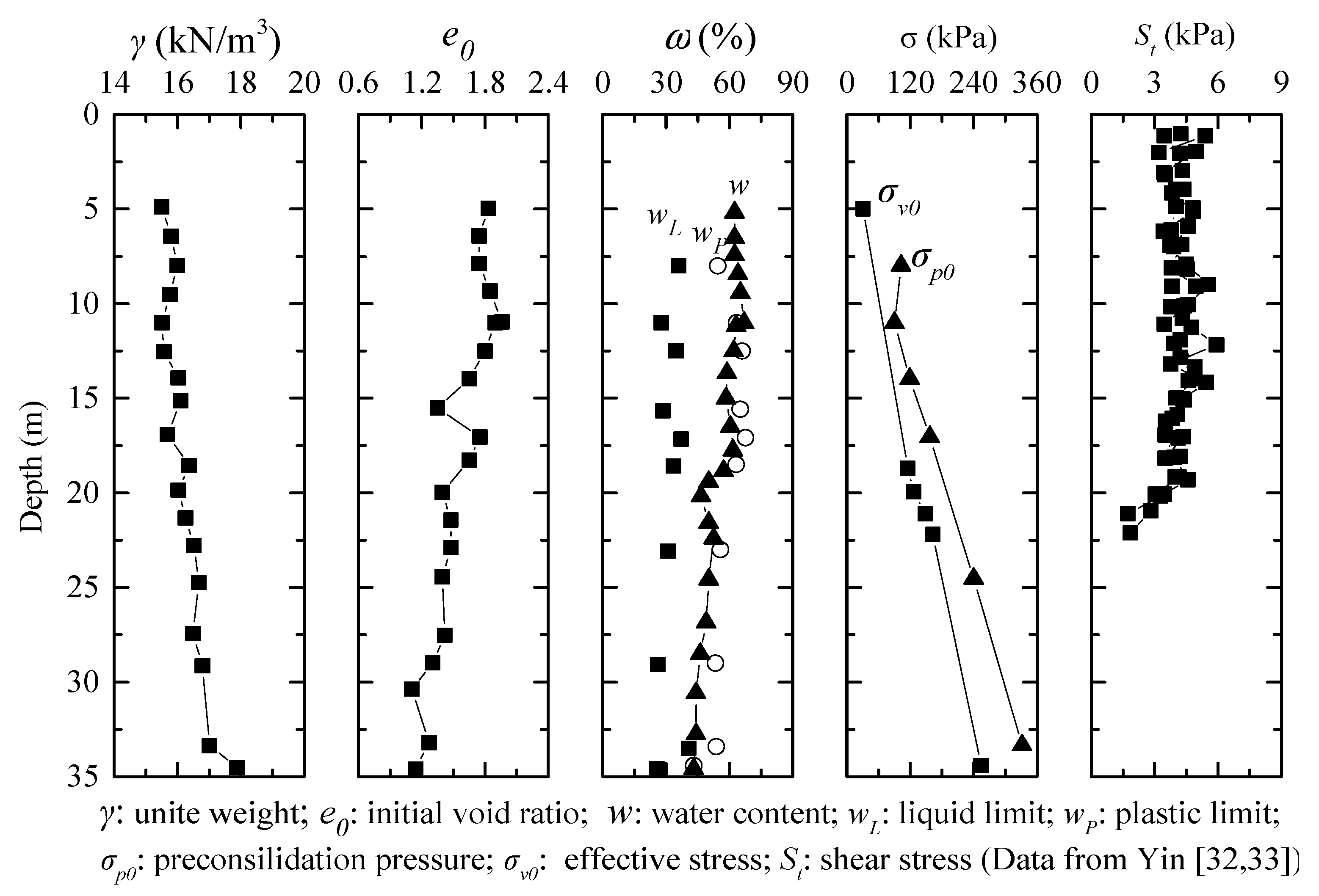
| Incident Date | Location | Type of Collapsed Building | Casualties | Constructed Date |
|---|---|---|---|---|
| 24 Oct. 2016 | Heze City, Shandong Province | Self-constructed residential building | 6 deaths, 7 injured | Under construction |
| 10 Oct. 2016 | Wenzhou City, Zhejiang Province | One two-storey and three six-storey residential buildings | 22 deaths, 6 injured | 1970s (two-storey rooftop addition) |
| 26 Feb. 2016 | Pingxiang City, Jiangxi Province | Six-storey residential building | 1 death, 1 injured | 1980s |
| 27 Jul. 2015 | Hangzhou City, Zhejiang Province | Four-storey residential building | 2 injured | / |
| 14 Jun. 2015 | Zunyi City, Guizhou Province | Seven-storey residential building | 4 deaths, 3 injured | 1995 (Four-storey rooftop addition) |
| 27 Aug. 2014 | Xinzheng City, Henan Province | Seven-storey residential building | 2 deaths, 1 injured | 1970s (Three-storey rooftop addition) |
| 4 Apr. 2014 | Ningbo City, Zhejiang Province | Five-storey residential building | 1 death, 6 injured | 1994 |
| 29 Aug. 2013 | Wenzhou City, Zhejiang Province | Two-storey residential building | 1 death, 3 injured | 1990s |
| 27 Mar. 2013 | Shaoxing City, Zhejiang Province | Four-storey residential building | 3 deaths, 1 injured | / |
| 16 Dec. 2012 | Ningbo City, Zhejiang Province | Two residential building | 1 death, 1 injured | / |
| 4 Aug. 2009 | Shijiazhuang City, Hebei Province | Two-storey residential building | 17 deaths | 1990s |
| 27 June. 2009 | Shanghai municipality | 13-storey high-rise building | 1 death | Under construction |
© 2018 by the authors. Licensee MDPI, Basel, Switzerland. This article is an open access article distributed under the terms and conditions of the Creative Commons Attribution (CC BY) license (http://creativecommons.org/licenses/by/4.0/).
Share and Cite
Lyu, H.-M.; Cheng, W.-C.; Shen, J.S.; Arulrajah, A. Investigation of Collapsed Building Incidents on Soft Marine Deposit: Both from Social and Technical Perspectives. Land 2018, 7, 20. https://doi.org/10.3390/land7010020
Lyu H-M, Cheng W-C, Shen JS, Arulrajah A. Investigation of Collapsed Building Incidents on Soft Marine Deposit: Both from Social and Technical Perspectives. Land. 2018; 7(1):20. https://doi.org/10.3390/land7010020
Chicago/Turabian StyleLyu, Hai-Min, Wen-Chieh Cheng, Jack Shuilong Shen, and Arul Arulrajah. 2018. "Investigation of Collapsed Building Incidents on Soft Marine Deposit: Both from Social and Technical Perspectives" Land 7, no. 1: 20. https://doi.org/10.3390/land7010020






